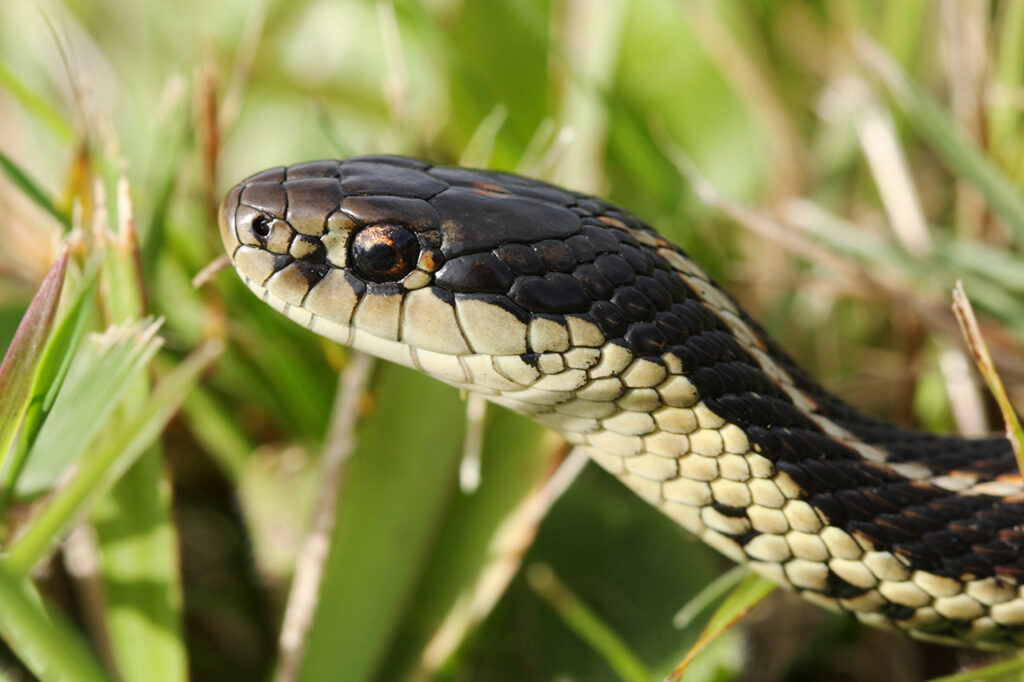Snake Facts
There are thousands of species of snakes throughout the world. Snakes can be found everywhere except Antarctica. Most species are non-poisonous, but snakes that are use their venom primarily to paralyze or kill prey, not for self-defense.

Snake Infestation
Many people are terrified of snakes, especially when they find them in their home. Though most snakes won’t seek refuge in your house, they may end up in your garage or basement by accident as they follow prey like mice and rats. They won’t cause any structural damage to your home, but can certainly pose a health risk if the snake is venomous. If you are unsure if the snake in your home is venomous or are uncomfortable removing it from your home, contact a pest control company to get rid of the snake.
Snake Bites
Snakes will always try to flee a scene, or hide before attacking. In the rare occasions that someone is bitten, it’s usually because the snake feels threatened. If you are bitten, remove yourself from the area and seek medical attention immediately. Remove anything that may prevent blood circulation near the bite area, like clothing or jewelry. Then wash the wound with soap and warm water.
If bitten on your leg or arm, immobilize the extremity and make sure to keep it below your heart. Make note of the time you were bitten and the symptoms you experienced. Share every detail with the medical staff that arrives.
No matter what, do not try to “suck” the venom out, ice the wound, or use a tourniquet. None of these methods work effectively. If you’ve been bitten, focus on getting medical attention and following the steps above. Don’t worry about trying to catch the snake or identifying it. It could lead to more bites.
Types of Snakes
Snake Identification
Snakes vary is size and color. Though most aren’t poisonous, it’s important to be able to identify possible species that can cause harm if you stumble across them.
Rattlesnakes
Perhaps the easiest snake to identify, this venomous family of snake is known for its rattler. There are several species in the United States that range in size from the foot-long ridge-nosed rattlesnake to the eight-foot-long Eastern diamondback Rattlesnakes. Rattlesnakes also have triangular heads.
Common Snakes
As the name suggests, these snakes are common with more than 2,000 species. This includes recognizable snakes like the milk snake, the Eastern hognose snake, and the garter snake. Most common snake species are small to medium-sized.
Vipers
Because of their venom and how it’s delivered to their prey, vipers are considered to be the most evolved snake family. In North America, these venomous snakes fall under the subfamily of pit vipers. They have heat sensing pits that allow them to locate and strike prey even in the dark. The most common species of pit viper in the United States is the rattlesnake. Areas of Florida find the copperhead, cottonmouth and Eastern diamondback rattlesnake to be most common. These snakes can be identified by their triangular heads, and of course, the distinctive rattler at the end of their tail.
Snakes in the Garden & Home
Snakes are natural pest controllers as they love to eat rodents. However, this may lead snakes into your garden, home, or garage because they are following their prey. Some snakes love to sun themselves and can be found on your driveway or out in the grass. Others will seek refuge under rocks or in bushes in your yard.
Other Snakes
Frequently Asked Questions
Are snakes poisonous?
Most snakes in North America are non-venomous, but snake families like the cobra or coral snake (Elapidae), and pit vipers (Crotalinae) are poisonous.
Regardless, being bitten by a snake can be very painful and can cause permanent tissue damage. If bitten, seek medical attention immediately.
Most snakes, even the poisonous species, aren’t known to attack unless provoked. Snakes prefer to hide themselves with camouflage techniques, or flee the situation altogether.
Snakes usually only attack if they feel threatened. If you stumble across a snake, be sure to stay away as far as possible. If you find a snake in your home, remove yourself from the area and call a pest management professional immediately.
What are the benefits of professional snake pest control?
Any type of wildlife nuisance or pest can be risky to remove safely without the proper equipment or experience.
Professional pest control specialists have the technology, educational background, and skill to safely but effectively remove the animal while also protecting all those on the property.
If you’re struggling with snakes on your property, contact us. Our technicians can remove them and help you regain control of your property and sanity.


